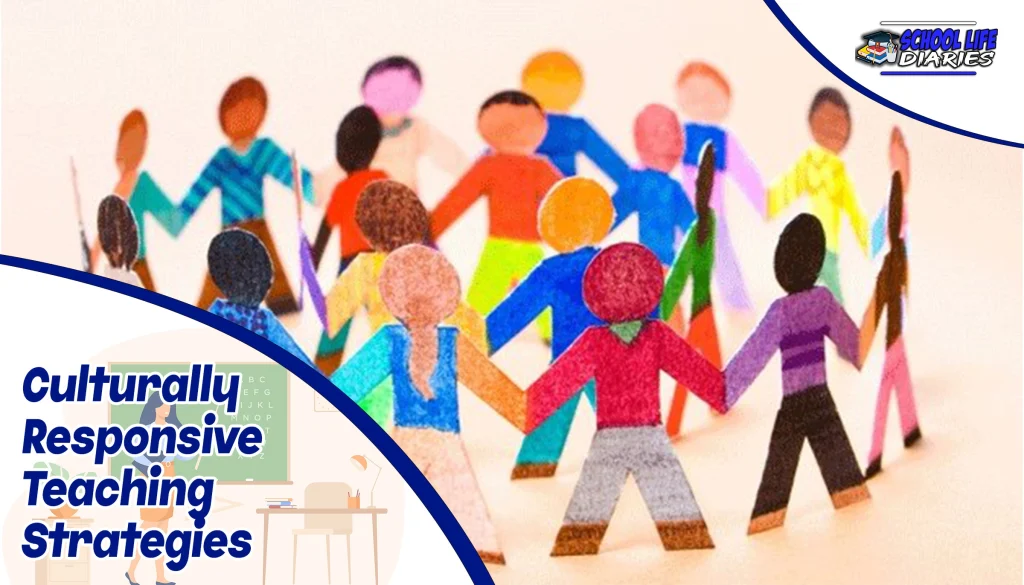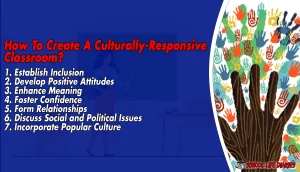In today’s diverse classrooms, it is crucial for educators to embrace culturally responsive teaching strategies. This approach recognizes and values the cultural backgrounds, experiences, and identities of students, promoting a more inclusive and engaging learning environment.
By tailoring instruction to the unique needs of each student, culturally responsive teaching fosters academic success and social-emotional development. In this article, we will explore the concept of culturally responsive teaching, its importance, the benefits it offers, and practical strategies for creating a culturally-responsive classroom.
What is Culturally Responsive Teaching?
Culturally responsive teaching is an educational approach that acknowledges the cultural diversity of students and incorporates their cultural backgrounds into the learning process.
It recognizes that students come from different cultural, linguistic, and social backgrounds and that their cultural identities influence their learning styles, values, and perspectives.
Culturally responsive teaching aims to create a positive and inclusive classroom environment that promotes academic achievement, cultural competence, and social justice.
Why is Culturally Responsive Teaching Important?
Culturally responsive teaching is important because it supports student engagement, motivation, and achievement. When students see their cultural backgrounds reflected in the curriculum and instructional practices, they feel valued and connected to their learning.
This connection enhances their sense of belonging and self-esteem, leading to increased academic performance. Furthermore, culturally responsive teaching helps to challenge stereotypes, promote cultural understanding, and foster empathy among students. It prepares them to thrive in an increasingly diverse and interconnected world.
Culturally Responsive Teaching vs. Traditional Teaching Methods
Culturally responsive teaching differs from traditional teaching methods in its emphasis on cultural relevance and inclusivity. While traditional teaching often adopts a one-size-fits-all approach, culturally responsive teaching recognizes the diverse needs and experiences of students.
It encourages educators to incorporate culturally diverse materials, perspectives, and teaching strategies into their instruction. By doing so, culturally responsive teaching promotes a deeper understanding and appreciation of different cultures and perspectives, creating a more enriching and meaningful learning experience for students.
What Are Some Benefits of Culturally Responsive Teaching?
1. Improved Academic Performance:
Culturally responsive teaching has been shown to enhance academic performance among students from diverse backgrounds. When instruction is tailored to students’ cultural identities, it increases their engagement, motivation, and active participation in the learning process. This leads to improved academic outcomes and a higher level of achievement.
2. Enhanced Cultural Competence:
Culturally responsive teaching helps students develop cultural competence, which is the ability to understand and appreciate different cultures and perspectives. By incorporating diverse cultural content and experiences into the curriculum, students gain a broader understanding of the world and develop skills for effective communication and collaboration in multicultural settings.
3. Increased Student Engagement:
Culturally responsive teaching creates a more inclusive and engaging learning environment. When students see their culture represented in the classroom, they are more likely to be actively involved in the learning process. This heightened engagement leads to improved attention, retention, and overall enjoyment of learning.
4. Positive Identity Development:
Culturally responsive teaching supports the positive identity development of students. By affirming and validating their cultural identities, it helps students build a strong sense of self and self-efficacy. This, in turn, enhances their confidence, resilience, and overall well-being.
5. Promotion of Social Justice:
Culturally responsive teaching promotes social justice by challenging inequities and stereotypes in education. It helps students critically analyze social issues, recognizes systemic inequalities, and advocate for fairness and inclusivity. By empowering students to become agents of change, culturally responsive teaching contributes to a more just and equitable society.
How To Create A Culturally-Responsive Classroom?
To create a culturally-responsive classroom, educators can implement the following strategies:
1. Establish Inclusion
- Foster a sense of belonging by creating a safe and supportive classroom environment where all students feel valued and respected.
- Incorporate diverse cultural materials, literature, and resources that reflect the backgrounds of your students.
- Encourage collaborative learning activities that promote positive interactions among students from different cultural backgrounds.
2. Develop Positive Attitudes
- Encourage open-mindedness and respect for diverse perspectives and cultures.
- Facilitate discussions that promote understanding and empathy.
- Address biases and stereotypes by challenging misconceptions and promoting cultural understanding.
3. Enhance Meaning
- Relate the curriculum to students’ cultural experiences and backgrounds.
- Make learning relevant and meaningful by connecting it to real-world examples and issues that students can relate to.
- Provide opportunities for students to share their cultural knowledge and experiences with their peers.
4. Foster Confidence
- Provide culturally responsive feedback and recognition that acknowledges and values students’ cultural contributions.
- Encourage students to take pride in their cultural identities and share their perspectives and experiences.
- Create opportunities for students to showcase their talents, such as through presentations, projects, or performances.
5. Form Relationships
- Build positive relationships with students by showing genuine interest in their lives, experiences, and aspirations.
- Cultivate strong parent-teacher partnerships to involve families in the learning process and celebrate cultural diversity.
- Foster peer relationships through cooperative learning activities and group projects that promote collaboration and mutual support.
6. Discuss Social and Political Issues
- Engage students in critical discussions about social and political issues related to culture, equity, and justice.
- Encourage students to analyze different perspectives, think critically, and develop their own informed opinions.
- Provide a safe space for students to express their thoughts and feelings, promoting respectful dialogue and active citizenship.
7. Incorporate Popular Culture
- Utilize popular cultures, such as music, movies, or literature, to connect with students’ interests and experiences.
- Incorporate culturally relevant examples and references into lessons to make learning more relatable and engaging.
- Use technology and multimedia tools to explore diverse cultural expressions and promote digital literacy.
FAQs:
Q: How can teachers ensure they are being culturally responsive in their teaching?
A: Teachers can ensure cultural responsiveness by valuing and incorporating students’ cultural backgrounds into their instruction. This can include using culturally diverse materials, adapting teaching strategies to meet individual student’s needs, and creating an inclusive classroom environment.
Q: Is culturally responsive teaching only relevant to students from minority backgrounds?
A: No, culturally responsive teaching benefits all students, regardless of their cultural background. It promotes inclusivity, cultural understanding, and academic success for all learners by acknowledging and celebrating diversity within the classroom.
Q: Are there any challenges in implementing culturally responsive teaching?
A: Implementing culturally responsive teaching may require educators to reflect on their own biases, seek professional development opportunities, and navigate potential resistance or misunderstandings from colleagues or stakeholders. However, the benefits of culturally responsive teaching outweigh the challenges, and it is a necessary step toward creating equitable and engaging learning environments.
Q: Can culturally responsive teaching be integrated into all subject areas?
A: Yes, culturally responsive teaching can be integrated into all subject areas. By incorporating culturally diverse examples, perspectives, and resources, teachers can make any subject more engaging, relevant, and meaningful for students.
Q: How can parents support culturally responsive teaching at home?
A: Parents can support culturally responsive teaching at home by celebrating and valuing their child’s cultural background, exposing them to diverse books, media, and experiences, and engaging in open conversations about culture, identity, and social justice.
Q: What resources are available for teachers to further explore culturally responsive teaching strategies?
A: There are numerous resources available for teachers to further explore culturally responsive teaching strategies. Online platforms, professional organizations, and educational publications offer articles, books, webinars, and workshops on the topic.
Conclusion:
Culturally responsive teaching is a powerful approach that recognizes and values the cultural identities of students. By embracing culturally responsive teaching strategies, educators create inclusive and engaging learning environments where all students can thrive.
By incorporating diverse perspectives, fostering cultural understanding, and promoting social justice, culturally responsive teaching prepares students to become informed global citizens. Embracing this approach is essential for creating equitable, enriching, and empowering educational experiences.







